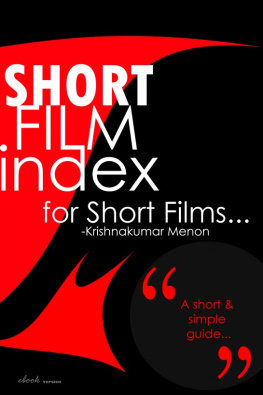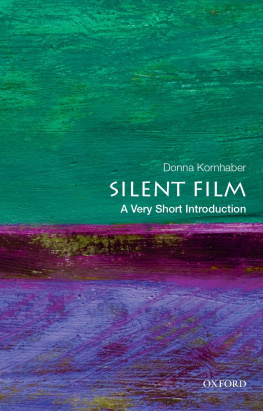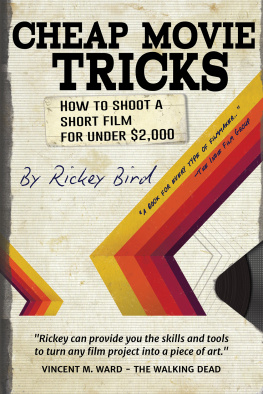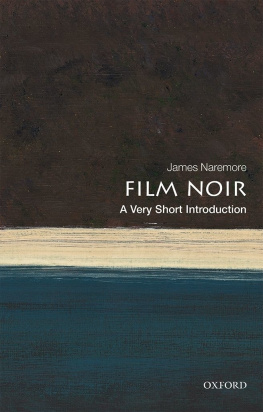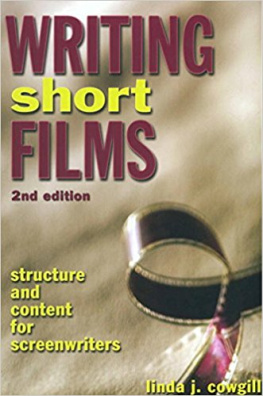SHORT FILM INDEX
By Krishnakumar Menon
Copyright 2016 Krishnakumar Menon
Smashwords Edition
Smashwords Edition, License Notes
This ebook is licensed for yourpersonal enjoyment only. This ebook may not be re-sold or givenaway to other people. If you would like to share this book withanother person, please purchase an additional copy for eachrecipient. If youre reading this book and did not purchase it, orit was not purchased for your use only, then please return to yourfavorite ebook retailer and purchase your own copy. Thank you forrespecting the hard work of this author.
Table of Contents
This Book
Short films can be a great way to showcaseyour ideas and thoughts visually. This book will help you providingan easy step-by-step guide making a better and perfect short film.Having said that, this book doesnt teach you feature film makingprocess or its aspects. This book is a complete and easy guide forshort film makers especially beginners. It's just about everythingin short. Read on...
FUNDING
So, thinking of making a short film? Great.Although short films need less or no funds, it is always advised tothink about how you are going to fund. Below are some steps forfunding a short film.
I nitialFunds
Well at this stage, you don't know how muchit's gonna cost you making your short film. You need some funds toget everything started.
F indingThe Source
Find a source for funds. Some of the mostfound sources for the fund are:
Friends and relatives: Check if youhave any friend willing to invest in your short film.
Crowd funding: Crowd funding is intrend nowadays. Many of indie film makers are finding this useful.Crowd funding is a process where you collect your funds byaccepting certain contributions from general consumers. It is aprocess of raising many small amounts of money from a large numberof people. Today, crowd funding is typically made throughinternet.
C ontingencies Fund
A part of funds collected should be keptaside as contingencies fund. It is a fund which will be used to paywhen you meet some urgent or unforeseen expenditure orproblems.
+E xecutive Producer
An executive producer is a person who makesan investment in your project. He/she is responsible for releasingfunds when demanded by the team throughout the project.
After getting the funds ready, we move on toassigning roles.
ROLES
To begin, you have to assign roles providingcertain rights and responsibilities. Below are the key roles andproduction department roles which need to be assigned here in thisstage.
K eyRoles
Producer: The producer is the personwho you are going to let enjoy the ownership rights of your shortfilm. He/she is responsible for controlling matters related tofunds, hiring key members, contracting and making certainarrangements throughout the project. The producer is involvedthroughout the project.
Director: Director is the creativehead for your short film. The director is responsible for managingevery creative aspects of your film. In other words, he/she isresponsible for the content of a film.
Screenwriter: A screenwriter orscriptwriter is the one who writes and formats a screenplay for afilm.
P roduction Dept.
There are certain production departmentroles which you have to assign first.
Executive Producer: The executiveproducer is the one who invests in the project. There can be morethan one executive producer for a film depending on the projectsize.
Line Producer: The line producermanages the budget of a film and may involve in other productionactivities.
Production Manager: The one whosupervises on production activities like scheduling and budgetingmaking the production stay within the budget and time throughoutthe project.
Production Coordinator: Theproduction coordinator is responsible for organizing every factorsand providing the production with the needed information.
Production Secretary: The productionsecretary assists production coordinator and manager.
Production Accountant: The productionaccountant is the one who maintains every financial recordsrelating to day-to-day activities of a production.
Post production supervisor: Theperson who keeps an eye on post-production process assuring theperformance is the Post production supervisor.
Assistant director: Assistantdirector is the one who assists production manager and director. Anassistant director can keep more assistants under him; usuallyfound only in feature films.
Script supervisor: The scriptsupervisor ensures continuity shot to shot throughout the shootingsession.
Assigning the key roles and productiondepartment roles is important before you go ahead to the next step.Certain roles listed under Production department roles are optionalbut recommended depending on the short film you are planning.However, new roles will be introduced step by step depending onprogress reading this book.
STORY
In this chapter, we will be looking into allthe steps needed for developing a story for your short film. Storyplays an important role in success of a short film.
A nIdea
Having a good idea plays a lead in shortfilm making. An idea should be very simple. A complex idea in mostcases fails to grab the attention of viewers. Being a starter youare recommended to make your idea short and simple. However, theselected idea should have an ability to be explored in emotionaldepth.
Some examples can be,
Etc.
These above mentioned ideas are small. Thepoint to be remembered is the idea should not be longer than onesentence. Keep in mind, getting a complex idea with multiple eventshappening in multiple lives can make short film a waste. So, onceagain, find and select a small idea. Write it in a paper. And letsmove on.
B asicidentification
You have to identify 3 subjects from yourIdea or story line which are:
World: Select a location. Betterlocations are with a specific time or specific ritual(recommended). For example, Diwali in Mumbai, Film Festival atKerala etc.
Character: Select a Character. Forexample, a businessman, a bank manager, a rapper etc. Selectinga name for character is optional.
Problem: Select an initial problem ofyour character. For example, He is poor, she is lonely etc.
Write your world, Characterand initial problem in a book. You can build a perfect storystructure with the help of an interesting World,Character and a problem.
S tructure
There is no rule on applying a storystructure. Structure should be selected on the basis of what shortfilm you want to achieve. Basically there is a traditional threeAct structure which you can follow. In short, it is a basicstructure having three acts.
ACT1: ACT1 consists of Introduction,Setup and a Point of No return in a respective order.Introduction face introduces the character and anenvironment. Setup includes an inciting incident which is the eventthat sets everything in motion. After introducing all prominentsubjects in story, when the story introduction is set, then theSetup face seems complete. Lastly, there should be a point of noreturn, which is a point where protagonist has no choice but tocontinue to ACT2. Usually something is taken away from yourprotagonist, and they can never go back to the way things were,then that is a point of return where they have to go further viz.ACT2.

